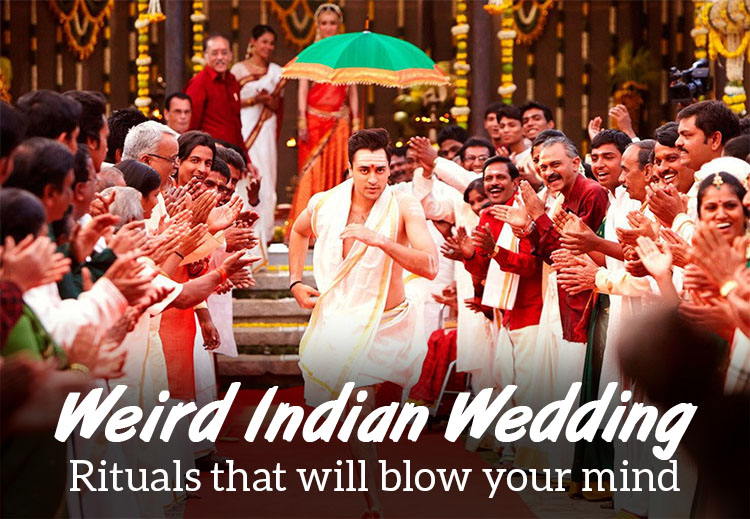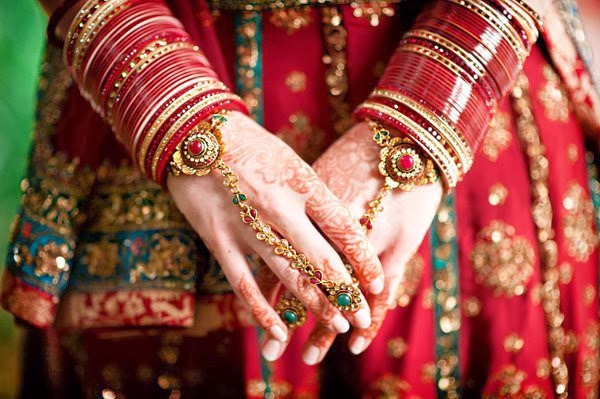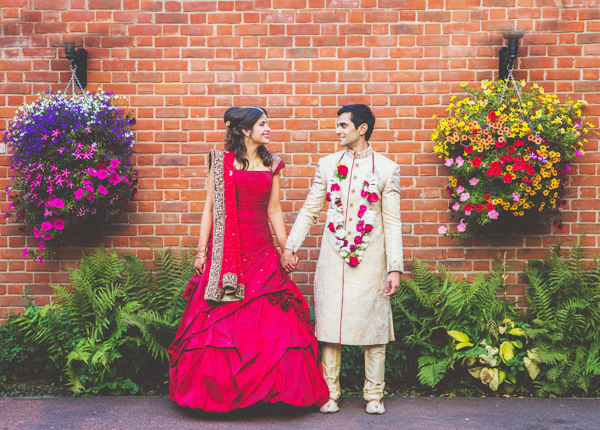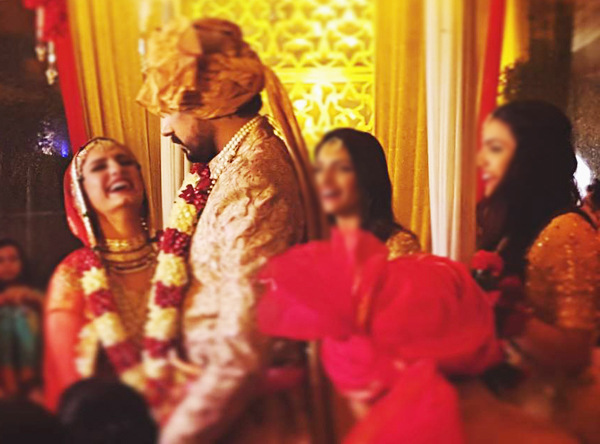Have you heard the popular phrase, “It happens only in India!”? Well, yes, that’s even more applicable to the context of the diverse wedding rituals our country has, as some of them are outright bizarre! India is a conglomeration of language, culture, and religions and yet in almost every community, there are some weird matrimonial ceremonies hard to reckon with. Here are a few of them –
Mandatory Change of Mind
In specific Tamil Brahmin communities, a groom has to change his mind at the last minute mandatorily and refuse to become a married man. He is then ritualistically counseled by his uncle or his father on the merits of becoming a ‘Sansarik’ and not a ‘Sanyasi.’ He’s told in detail about the significance of matrimony and ‘Grihastha Ashram ‘ and his roles and duties as a husband, so he comes back to his senses and agrees to sit at the marriage altar.
Drink that Dude!
Among Gujaratis, it’s mandatory to have the groom’s feet washed with milk and honey by his would-be father-in-law. But what’s bizarre is he’s then supposed to drink that sweet, slimy, dirty “potion” in the name of Madhuparka, as this ritual is called.
Trapeze Star Bride?
In a common post-wedding ritual of Bihar, a newlywed bride has to balance earthen pots after pots on her head, which are placed there by her mother-in-law. It doesn’t end there. She has to then seek the elder’s blessings by bowing This is said to symbolize the bride’s ability to balance her familial and matrimonial responsibilities.
Pinocchio Groom
We all have read about Pinocchio who’s nose became longer with every lie. But here’s another way to make that happen! Gujarati wedding! In a ceremony named Ponkhana where the groom’s mother-in-law first greets him and performs an aarti, but then she mandatorily pulls the groom’s nose! This is symbolic of helping the groom remember that he’s the one who has come to seek the bride in marriage and so much remains humble.
Runaway (with) Bride!
Some of the Adivasi communities in India have this strange tradition of the husband keeping the newly wedded wife in some hidden place for a full one year. She’s not allowed to go out or interact with anyone for that duration. After the end of one year, the community seniors approve the wedding, and an official celebration is held.
Roses, No, Tomatoes, Yes!
In Sarsaul, Uttar Pradesh, within a certain tribal community, it is mandatory to greet and welcome the groom’s family with quite a strange thing. Not roses, not rose water or perfumes, not even with drinks and paan. They are welcomed by being pelted with tomatoes! The community seems to believe that a matrimonial association beginning with tolerating such torture with such patience definitely makes room for long-term patience, love, and understanding between the newlyweds.
You may or may not be looking forward to having any such bizarre matrimonial ceremonies. However, screening through online matrimonial sites often can turn pretty bizarre due to various online hazards. We at LoveVivah take utmost care to bring you verified and best of profiles, and thus with us, you’re sure to find your perfect match!
To ascertain quality and authentic profiles, we insist on Aadhaar linking of the profiles. This is for our member’s, your own, security and convenience. We are committed to bringing you the best matrimonial site India has ever had, and hence we go this extra mile of Aadhaar linking & verification at the backend.





